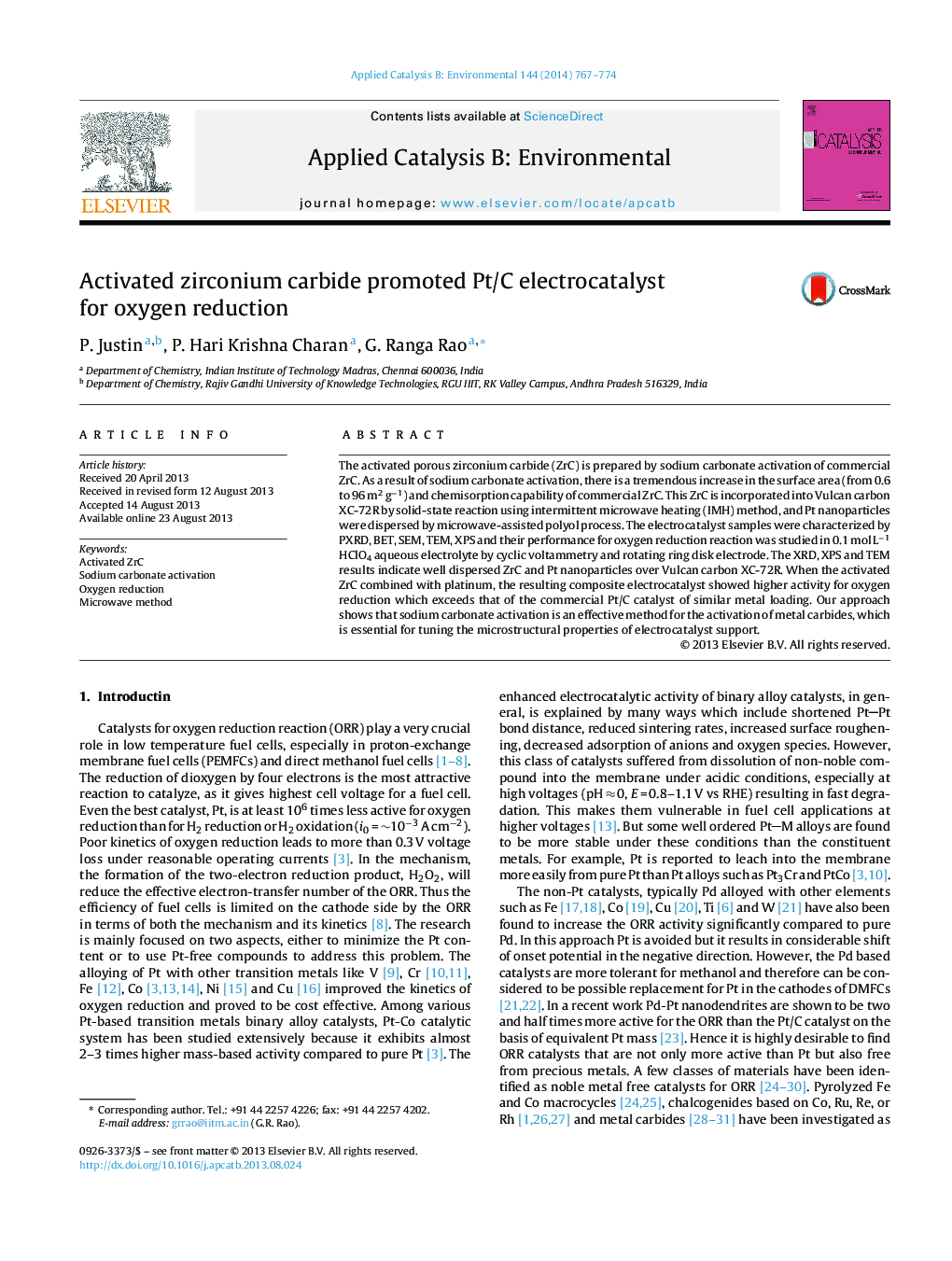| Article ID | Journal | Published Year | Pages | File Type |
|---|---|---|---|---|
| 45416 | Applied Catalysis B: Environmental | 2014 | 8 Pages |
•Synthesis of porous activated ZrC by Na2CO3 activation method.•Enhancement of surface area of ZrC by Na2CO3 activation.•ZrC-C composite prepared by intermittent microwave heating method.•ORR activity of Pt/activated-ZrC-C electrode is higher than Pt/C electrode.
The activated porous zirconium carbide (ZrC) is prepared by sodium carbonate activation of commercial ZrC. As a result of sodium carbonate activation, there is a tremendous increase in the surface area (from 0.6 to 96 m2 g−1) and chemisorption capability of commercial ZrC. This ZrC is incorporated into Vulcan carbon XC-72R by solid-state reaction using intermittent microwave heating (IMH) method, and Pt nanoparticles were dispersed by microwave-assisted polyol process. The electrocatalyst samples were characterized by PXRD, BET, SEM, TEM, XPS and their performance for oxygen reduction reaction was studied in 0.1 mol L−1 HClO4 aqueous electrolyte by cyclic voltammetry and rotating ring disk electrode. The XRD, XPS and TEM results indicate well dispersed ZrC and Pt nanoparticles over Vulcan carbon XC-72R. When the activated ZrC combined with platinum, the resulting composite electrocatalyst showed higher activity for oxygen reduction which exceeds that of the commercial Pt/C catalyst of similar metal loading. Our approach shows that sodium carbonate activation is an effective method for the activation of metal carbides, which is essential for tuning the microstructural properties of electrocatalyst support.
Graphical abstractFigure optionsDownload full-size imageDownload as PowerPoint slide
